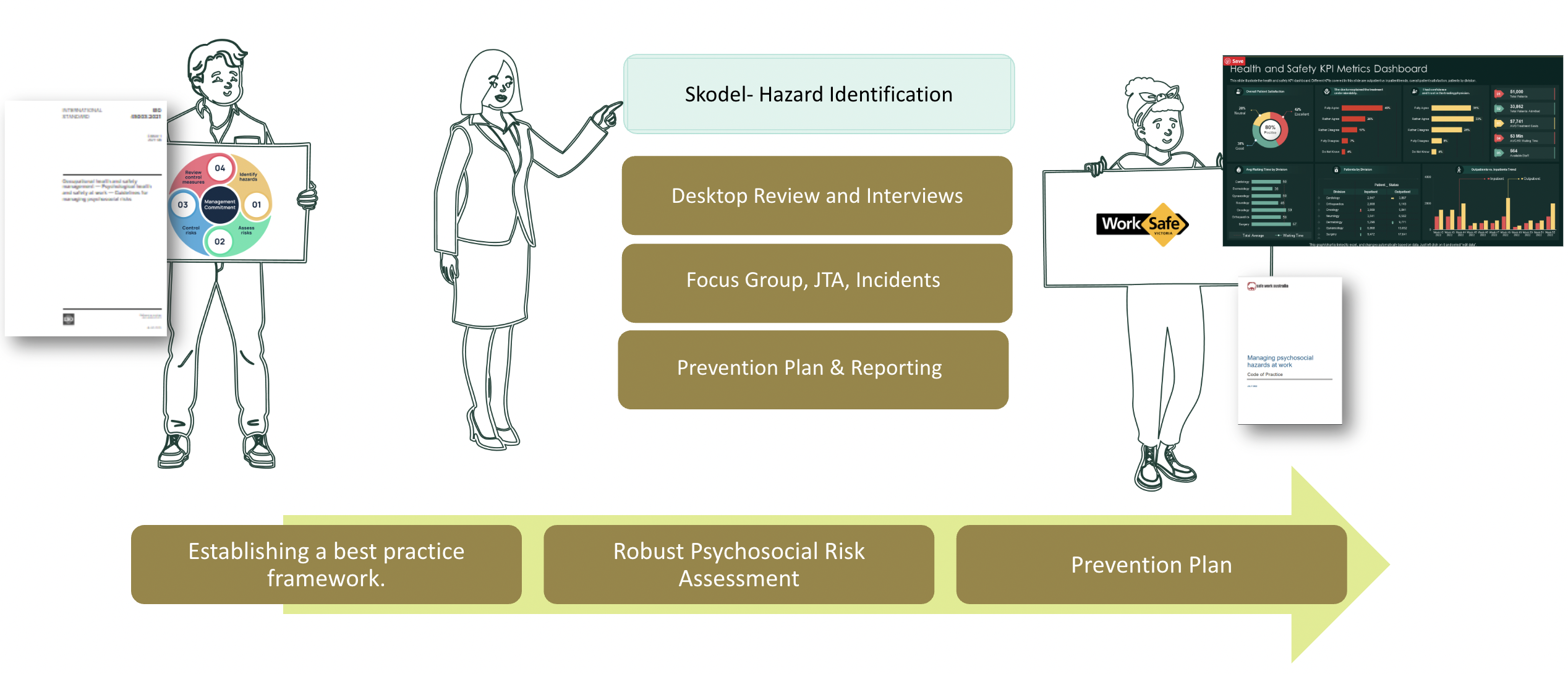.png)
Victorian psychological health regulations are here
Effective 1 December 2025, WorkSafe Victoria’s Occupational Health and Safety (Psychological Health) Regulations and its new Psychological Health Compliance Code will come into force.
This edition provides an overview of what’s included, what’s not, and outlines practical steps and frameworks organisations can use to prepare for implementation.
What's included & what's not
The new regulations bring Victoria broadly into alignment with other Australian jurisdictions, requiring employers to identify, assess and control psychosocial hazards so far as is reasonably practicable.
Included:
- Clear duties to identify, assess, and control psychosocial hazards as part of the broader risk management cycle.
- Consultation requirements that extend to contractors and health & safety representatives.
- Expectation that the person conducting psychosocial risk assessments has “knowledge and understanding about how to analyse evidence to consider risks and appropriate controls.”
- Strong emphasis on ongoing monitoring and review - psychosocial risks can change at the drop of a hat.
- Recognition that poor psychological safety can amplify the risk of psychological injury.
Not included:
- Mandatory written prevention plans.
- Six-monthly reporting of psychosocial incidents.
While not mandatory, WorkSafe has provided prevention plan templates and strongly encourages their use.
Fines and penalties
The psychosocial regulations carry the same penalty framework as other OHS breaches. For employers, failure to manage psychosocial hazards so far as is reasonably practicable can attract serious penalties.
- A body corporate (the company) may face fines of up to 18,000 penalty units (around $3.3 million),
- While individuals such as company officers may be fined up to 1,800 penalty units (around $330,000).
A framework for psychosocial risk management
The framework below outlines a practical way to embed psychosocial risk management. You might consider these aspects within your organisation.

Consultation is key
The value lies in the insights gathered through consultation (the middle section of the above flow diagram). Whether from surveys, focus groups, informal discussions or a combination, this information forms the foundation for your risk register and prevention plan.
Good data isn’t just about measurement, it’s about connecting what people are experiencing to what’s being done about it. This means:
- Structuring questions and discussions around the 17 psychosocial hazard categories.
- Translating employee feedback into themes and linking them to risk controls.
- Understanding at what point the information may indicate controls are failing.
- Using the findings to prioritise actions and track changes over time.
Timeline and key activities
The below Gantt chart walks through the key activities and approximate timelines for establishing a robust psychosocial risk management framework - assuming you are using Skodel to support data collection, consultation, and reporting. This reflects the typical roadmap we follow when helping organisations integrate psychosocial risk management into their overall safety system.

Implementing your framework
If you’d like to discuss how Skodel can support your organisation in building out a practical approach to psychosocial risk management, we’re always happy to have an exploratory conversation - info@skodel.com
Register for the WorkSafe Victoria webinar
WorkSafe Victoria webinar: Psychological Health Regulations – Focus on Risk Management - Register Here
.png)
.png)